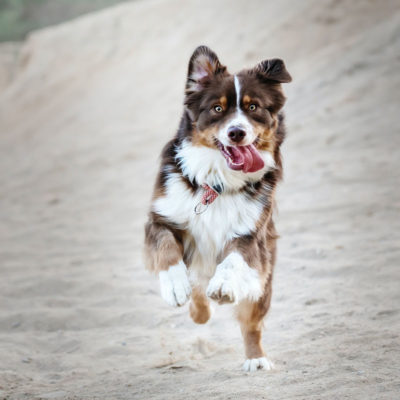Last Updated on September 7, 2023 by Dr. Alisha Barnes

We see lots of active dogs who play hard, run fast, and jump often! With high performance athletes like these guys, some serious injuries can occur. One of the most common injuries we see is a cranial cruciate tear, which is a ligament tear that occurs in the knee. Some breeds are more susceptible to this injury, like Golden Retrievers, Labradors, St. Bernards, and Rottweilers. Other factors that can lead to CCL damage is normal wear and tear with age, genetics, or conformation. Rupture of a healthy CCL is very rare, so most tears result from subtle, slow degeneration over months or years.
What is CCL injuries?
Cranial cruciate ligament (CCL) injuries are the most common orthopedic cause of hind-end lameness, stifle (or knee) pain, and knee arthritis in dogs. The cranial cruciate ligament is a fibrous band of tissue that restricts excessive movement between the femur and the tibia, the two main bones of the knee. This ligament’s primary job is to stabilize the joint, and prevent any type of torsion or unstable shearing.
CCL injuries in dogs are classified as either a partial-tear (ligament still intact) or a full-thickness tear. Since a full thickness tear involves a complete rupture of the ligament, the dogs usually do not see much improvement with conservative rehabilitation and most will require surgery, commonly known as a TPLO procedure (tibial plateau levelling osteotomy). Partial thickness tears, on the other hand, may be responsive to conservative rehabilitation depending on the case and severity of injury.
Dog Chiropractor
So where does chiropractic care come in? A conservative approach to managing CCL injuries in dogs can include chiropractic adjustments to reduce pain, restore pelvic alignment, and maintain symmetrical loading in the hind end. When dogs injure one knee, they tend to shift body weight over to the opposite side, causing rotation of the lumbar spine and pelvis. This can lead to back pain and asymmetrical loading of the knees. By improving alignment, we can ease discomfort and reduce extra wear and tear on an already injured knee. Chiropractic care is also great post- TPLO surgery to retrain the dog to evenly distribute its weight and build up muscle on the weaker leg. Mobilization of the joints and pelvis can also help prevent early arthritic changes from occurring post-surgery.
Other conservative treatment options include acupuncture, laser treatments, activity restriction, and nutritional support. Because every cruciate injury is different, we always work closely with your veterinarian’s recommendations and tailor a treatment plan specifically for your pet’s needs.
